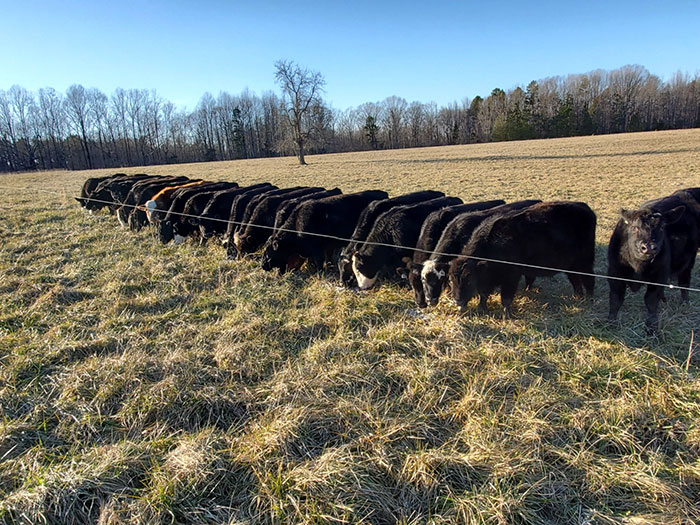
Whole cottonseed has a high level of both energy and protein, which makes it an all-purpose supplement that can help overcome deficiencies of each when cattle are grazing stockpiled tall fescue-based pastures during winter.
A recent article from The Alliance of Grassland Renewal highlights the utility of whole cottonseed as a supplement used in conjunction with pasture. Matt Poore notes that his first study using whole cottonseed was done 25 years ago, and he still uses it on his own farm today.
In the original study, the North Carolina State University extension animal scientist used crossbred Angus heifers that were being frontal grazed on stockpiled tall fescue. One group of animals received 2 pounds of whole cottonseed per day (0.33% of bodyweight) while the control group received none.
The two-year study was done using 600-pound heifers being grazed for 84 days, starting in early December and finishing in early March. Moore explains that there was a considerable difference in the forage each year.
The first year there was mostly tall fescue that remained very green throughout the winter. The crude protein content was between 15% and 20%. During the second year, there was a lot of early autumn rain, resulting in more bermudagrass and crabgrass being mixed in the sward. This resulted in lower crude protein, about 12%, and energy value compared to the first year.
The whole cottonseed supplement resulted in better gains during both years, with a bigger boost in the second year. Based on the blood urea nitrogen levels in the heifers (an indicator of protein status in forage-fed cattle), Poore attributed the modest 0.25 pound per day improvement in the first year as an energy response.
During the second year, there was closer to 0.5 pound per day improvement in weight gain, which is more characteristic of a protein and energy supplement.
Poore notes that whole cottonseed is easy to feed in a frontal grazing system by placing it on sod under the temporary hot wire. Its consistency allows the cottonseed to pile up on top of the sod, and the animals eat nearly every seed. Further, there is no mess around feeders like there might be in a more permanent feeding area.
“Twenty-five years later, I continue to routinely use whole cottonseed as the primary supplement for developing heifers and grazing beef steers,” Poore shares. “We know that stockpiled fescue, whether it is toxic Kentucky 31 or novel endophyte, will only give us about 1 pound per day average daily gain for growing cattle. Average daily gain needs to be a little higher than that for good reproduction and beef quality,” he concludes.

